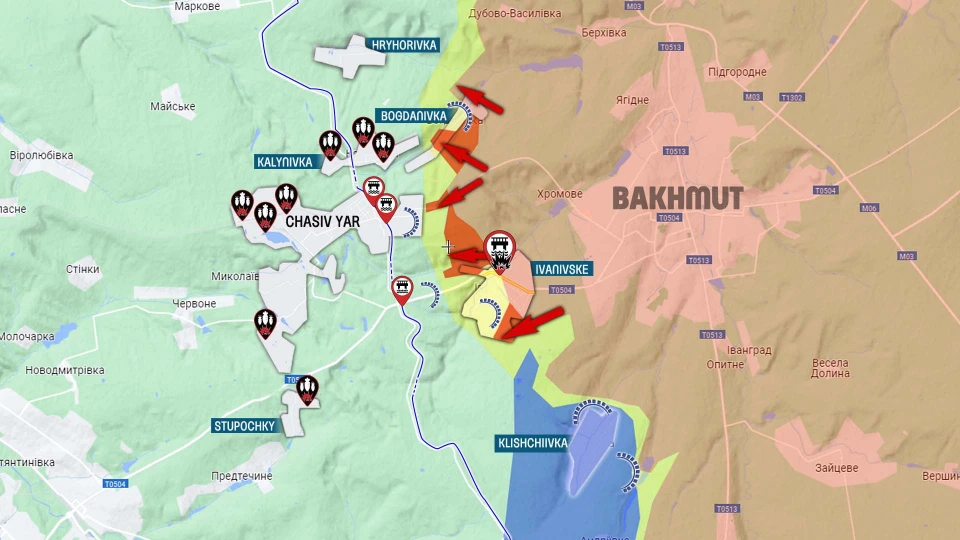
Map of hostilities for April 3-10: new strategy of war for sky and Russia's threatening advance
In the Donetsk region, Russia has concentrated more troops than it had at the time of the invasion of Ukraine. This is paying off: they continue to advance on the Kurakhove and Pokrovsk directions.
Breakthrough to Chasiv Yar
Russia has concentrated not only significant human resources on the eastern outskirts of the city, trying to break through in several areas at the same time. They have also deployed a powerful air force for the assault, massively bombarding both the front and rear locations with KABs and brazenly operating almost on the contact line. Twice during the week, the invading troops attacked using more than 30 pieces of armored vehicles.
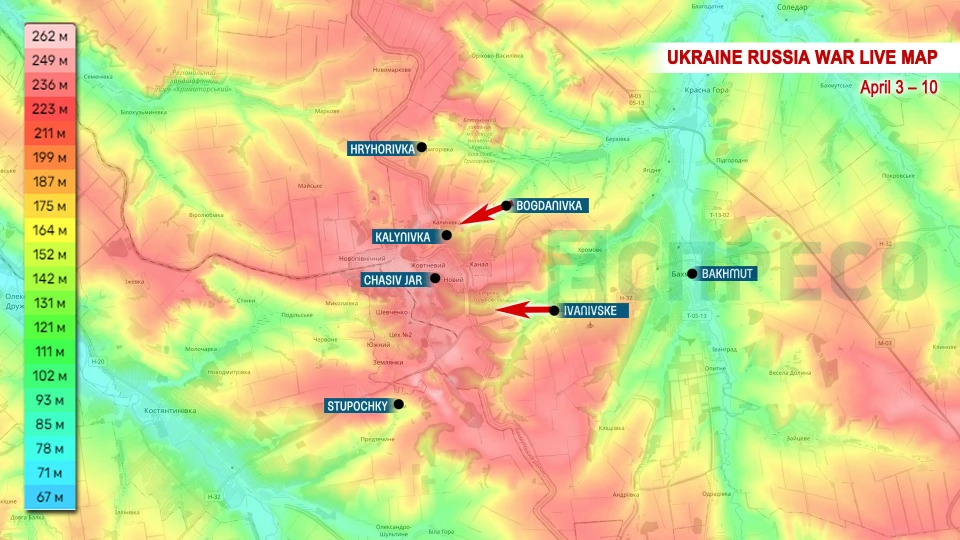
At the end of the week, the Russian forces managed to break through the Bakhmut-Chasiv Yar (00506) northern road to the first houses on the outskirts of the city. It's too early to talk about urban fighting, but this breakthrough has created a significant threat to Ukrainian Defense Forces in Bohdanivka, which came under enemy fire. So Ukrainian troops gradually began to withdraw from this village, while the Russians occupied a part of it to continue their breakthrough to Kalynivka and Hryhorivka. Thus, they are trying to execute their standard maneuver to cover the city from different sides. However, the assault on Kalynivka is significantly complicated by the fact that it is located on a hill. Nevertheless, the Russians will try to get up there under the cover of a forest that stretches from Kalynivka to the northeastern outskirts of Chasiv Yar.
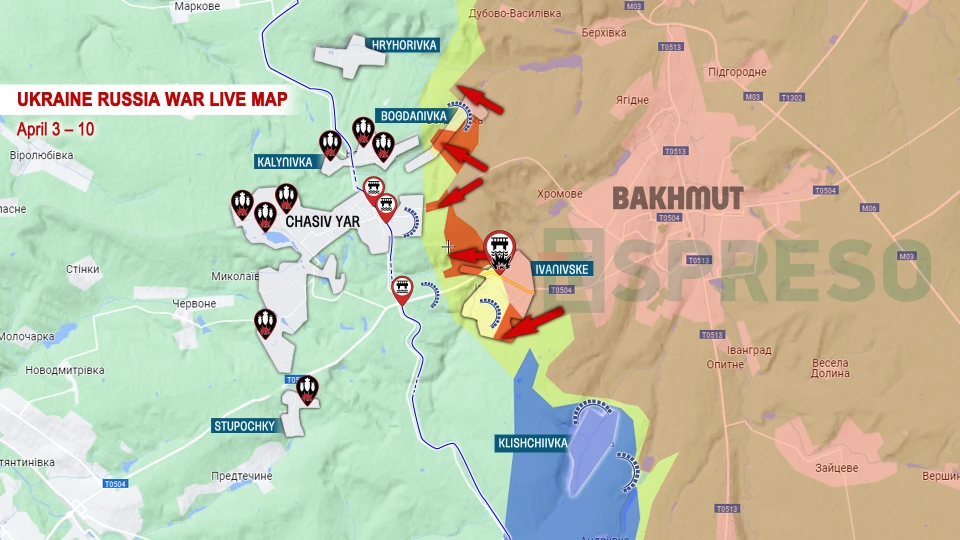 At the same time, the Russians are trying to get to the city via the southern road, from Bakhmut. The village of Ivanivske, which was on the way, is now about half occupied, including its southern and eastern parts. In addition, the Russians have made their way deep into the forest to the north of the village, further complicating its defense. Last week, the Ukrainian Armed Forces blew up a bridge across the canal to hold back Russia's advance, so we are likely to see a controlled retreat of Ukrainian military to more favorable positions closer to the city in the coming days. In fact, the new defense line of the Ukrainian Armed Forces will be built in two forests on the outskirts of Chasiv Yar and across the Sieverodonetsk Canal. An important element of defense will be to prevent a breakthrough to the rear of the Ukrainian Defense Forces fighting on strategically important heights in Klishchiivka.
At the same time, the Russians are trying to get to the city via the southern road, from Bakhmut. The village of Ivanivske, which was on the way, is now about half occupied, including its southern and eastern parts. In addition, the Russians have made their way deep into the forest to the north of the village, further complicating its defense. Last week, the Ukrainian Armed Forces blew up a bridge across the canal to hold back Russia's advance, so we are likely to see a controlled retreat of Ukrainian military to more favorable positions closer to the city in the coming days. In fact, the new defense line of the Ukrainian Armed Forces will be built in two forests on the outskirts of Chasiv Yar and across the Sieverodonetsk Canal. An important element of defense will be to prevent a breakthrough to the rear of the Ukrainian Defense Forces fighting on strategically important heights in Klishchiivka.
Avdiivka-Pokrovsk direction
After the occupation of Avdiivka, the Russian troops continued to move westward without pausing, as they did in other operations, in order to use the window of opportunity and make their way to Pokrovsk as much as possible. The most threatening is the small bridgehead that the Russians are trying to organize on the western bank of the Durna River, between the villages of Orlivka and Semenivka. This bridgehead will actually allow them to break into the main line of defense of the Ukrainian Armed Forces in this area of the front. At the moment, it is impossible to talk about a full-fledged consolidation of the Russian units on the right bank, as fierce fighting continues to prevent this.
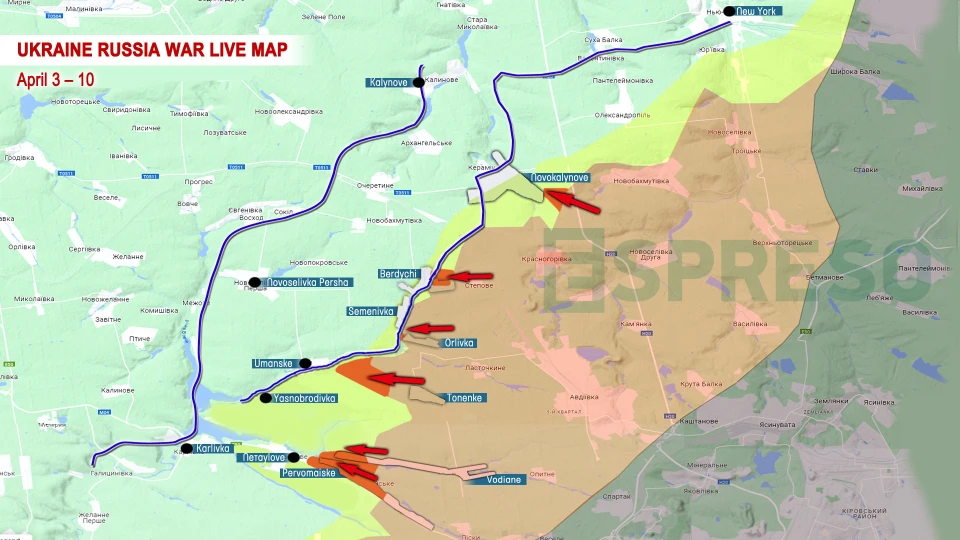
A little further south, the invading troops are advancing to Umanske with fighting. It was here that their biggest breakthrough to a depth of about 1.5 km took place during the week. At the same time, these battles are still taking place on the outskirts of the main defense line, which runs through Umanske on the other side of the river.
The Russians have completely occupied the once thousands-strong village of Pervomaiske, a battle that lasted for over a year. At the same time, the Russian Armed Forces advanced several hundred meters north across the reservoir toward the village of Netailove.
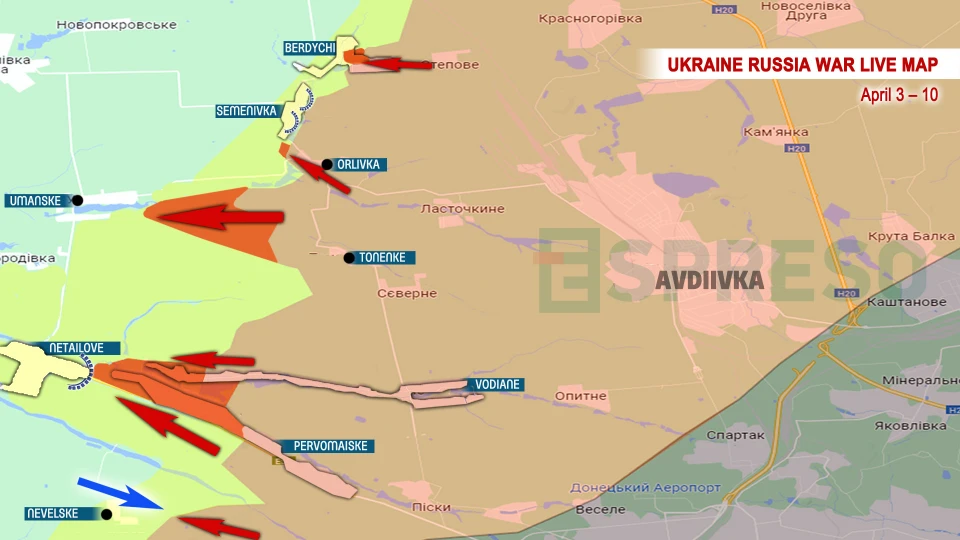
In the north of the Avdiivka front, the Russian army completely captured Berdychi in a week and intensified attacks in the direction of the important for the Ukrainian Armed Forces village of Ocheretne.
North of Krasnohorivka, the occupation forces managed to cross the railroad tracks and approach the southern outskirts of Novokalynove.
Vuhledarsko-Kurakhove direction
For more than six months now, the Russian troops have been unable to capture the almost destroyed Novomykhailivka. Over the past week, they have captured several more streets in the central part of the village, and they managed to gain a foothold in the village of Pobieda, which has been under battle since the beginning of winter. However, nothing remained of the village, which had only a dozen houses.
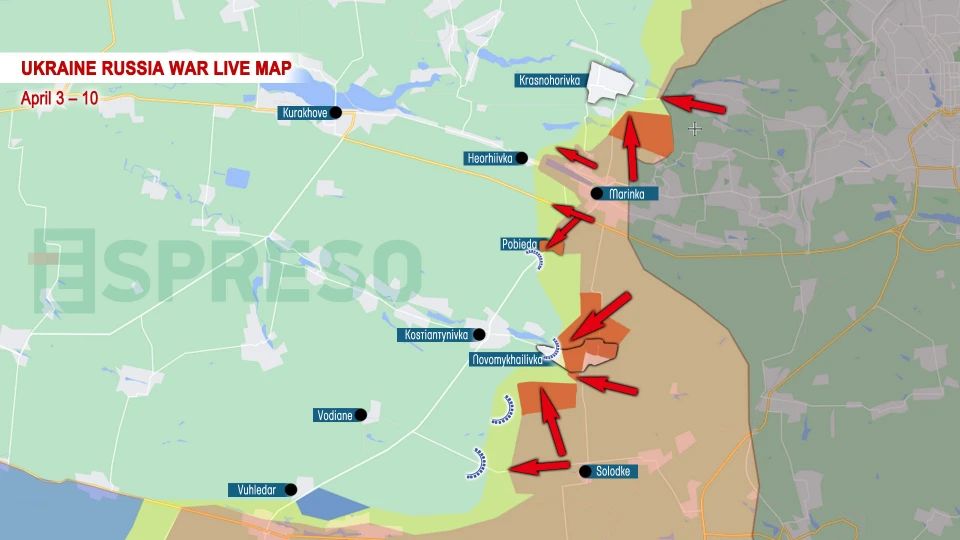
In addition, Russia has resumed its offensive on the town of Krasnohorivka, north of Marinka. A few weeks ago, they made their first breakthrough to the southern outskirts of the town, but the 3rd Assault Brigade helped to drive them out. Now we see a second attempt to enter the city from the south. At the same time, there is constant pressure on the city's defenders from the east, where the front line has been built since the ATO.
Ukraine’s Armed Forces are changing the strategy of the war for the sky
The best news for Ukraine was a massive drone attack on Russian airfields in Yeysk, Morozovsk and Engels. There is currently no reliable information about Russia's losses, but according to preliminary data, Ukraine managed to destroy or severely damage 14 bombers and 6 fighters.
Given that Ukraine will not soon be given the necessary number of air defense systems to completely cover the sky, and F-16s will only partially solve this problem, the Armed Forces have changed their strategy. Now AFU are destroying missile carriers. Unlike the missiles themselves, Russia does not have many bombers - just over 300 units of all kinds that can launch missiles from a long distance. Regular destruction of Russia's strategic strike aircraft will force them to constantly hide and flee far beyond the Urals. This will make it much more difficult to launch missile strikes against Ukraine.
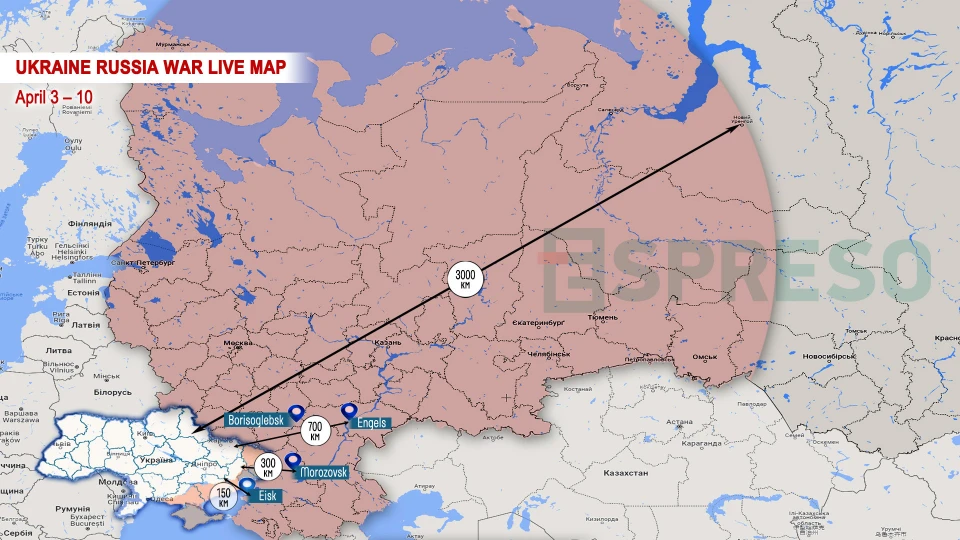
Besides, as it has become known, Ukraine's allies, the British and Germans, are already testing a new secret drone launch technology that will not only allow for massive attacks 3,000 kilometers into Russia, but will also make these drones less vulnerable to enemy air defense.
Such prospects allow the Ukrainian Armed Forces to plan not only the destruction of Russian aviation, but also factories that manufacture and restore long-range missiles. The first swallow of this strategy was a strike on an aircraft repair plant in the city of Borisoglebsk, Voronezh region, which was engaged in the restoration of Kh-55 and Kh-555 missiles, as well as Kh-22.
The maps were created based on information received from the General Staff of the Ukrainian Armed Forces, as well as other open and verified sources. At the same time, the maps are not as accurate as possible and only conditionally reflect trends in the combat zone.- News





